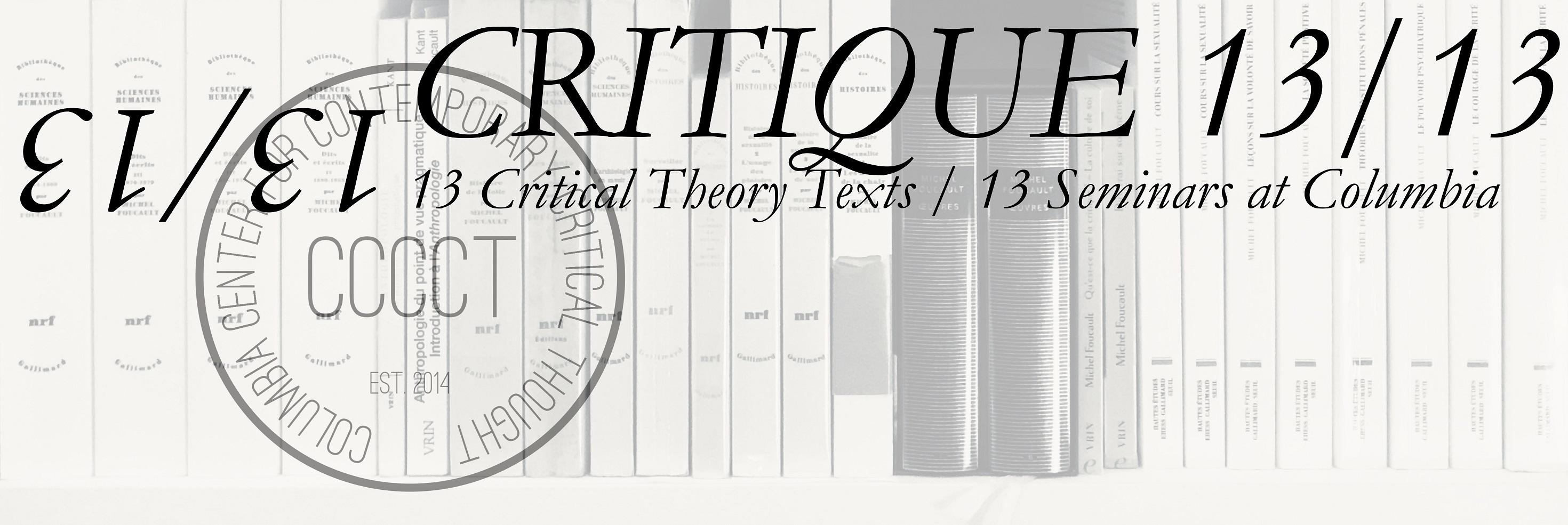By Bernard E. Harcourt
We turn today to two texts. First, Horkheimer’s 1937 article “Traditional and Critical Theory,” which sets forth the blueprint of Horkheimer’s vision of the research project and method for the Institute for Social Research at the University of Frankfurt. Second, Adorno’s own blueprint, six years earlier in 1931, of his vision of philosophical research and method, in his lecture “The Actuality of Philosophy” delivered as the inaugural lecture on the occasion of his entry into the philosophy department at the University of Frankfurt. I propose that we pair these two very different texts because of the subsequent history of Horkheimer and Adorno’s close intellectual collaboration, in order to explore the tensions, hopefully fruitful, in their diverging points of departure.
We are joined today by Professor Axel Honneth, the Jack C. Weinstein Professor of the Humanities in the Department of Philosophy at Columbia University, the C4-Professor of Social Philosophy at the Goethe-Universität Frankfurt am Main, and the former director of the Institute for Social Research at the Goethe-Universität Frankfurt am Main.
At our last seminar, we discussed methods of reading, and several were proposed. Lydia Goehr proposed an Adornian method of reading, one that takes philosophical texts, like artworks, as having a history and afterlife, and that calls on us to do justice to the texts and to ourselves. Nadia Urbinati urged us not to distort texts and to speak instead in our own voice. Étienne Balibar proposed a Deleuzian method of reading as a form of dramatization that turns the text into a battlefield.
Axel Honneth, by contrast, proposed four different methods of reading—but favored one, which he called the “dialogical.” By contrast to philological, ideological, or instrumental readings, Honneth leaned toward being in dialogue with a text: to reject what one cannot understand from the text, engage what one can, and be in conversation with one’s ideas and work.
It is this method, I suspect, that will guide Honneth’s reading of these texts today. For Axel Honneth has been in dialogue with the writings of Horkheimer and Adorno—especially Horkheimer, more so than Adorno—for all of his intellectual life.
His first book, The Critique of Power, published in 1985, starts from a dialogue with Horkheimer, and what animates the entire work is his finding of a “sociological deficit” in Horkheimer’s 1937 essay. It is to repair and overcome that sociological deficit that Honneth turned first to the writings of Michel Foucault on relations of power, but then ultimately, to Habermas’s communicative action theory. In dialogue with Horkheimer, and then Habermas, Honneth was able, at the time, to reconstruct a critical social theory for our times.
Honneth’s method there was, in part, dialogical; but I would add that it also had an element of Balibar’s idea of the text as battlefield (as reflected in the searing critique of Horkheimer’s “sociological deficits”), and was also close to the fourth method that Honneth called instrumental—and that I had called, last seminar, “presentist” or “brutalist,” trying to rehabilitate terms that no one likes, but that today I will simply call “engaged.” Honneth’s reading of Horkheimer in The Critique of Power was an engaged reading, like the one I call for: to read critical texts in order to rejuvenate critical social theory for today.
Axel Honneth also deploys a similar approach in his more recent work, The Idea of Socialism. There, Honneth takes the nineteenth century idea of socialism and strips it of its historical context—the context of the Industrial Revolution—strips it as well of its Marxist philosophy of history and assumptions about the proletariat, and then infuses it with, or steeps it in, the sphere of political deliberation. That work represents an effort, I would argue, to wrestle with the idea of socialism, to extract it from its historical origins and framework, and infuse it with ideas about deliberative democracy.
This may be a dialogical reading of an idea—but it is also surely “engaged” in the sense that I propose in “The Illusion of Influence.”
Enough on method for now though—or at least, on our reading method in this seminar—let’s turn, or rather let’s return now, to these two formative texts from the 1930s to see what work they can do for us, today.
Welcome to Critique 2/13!
